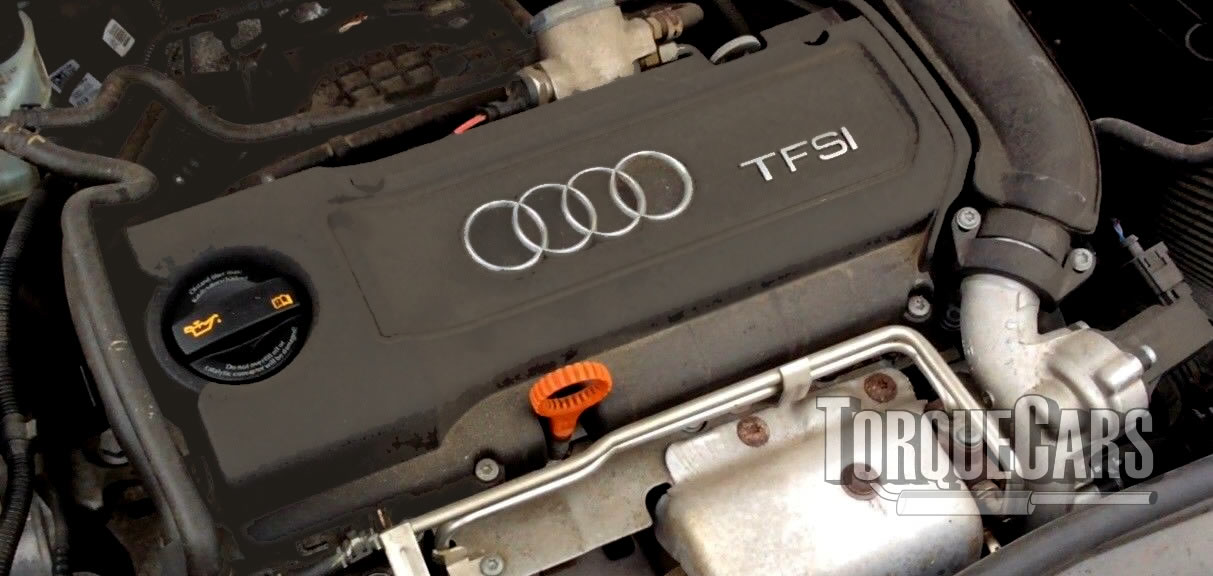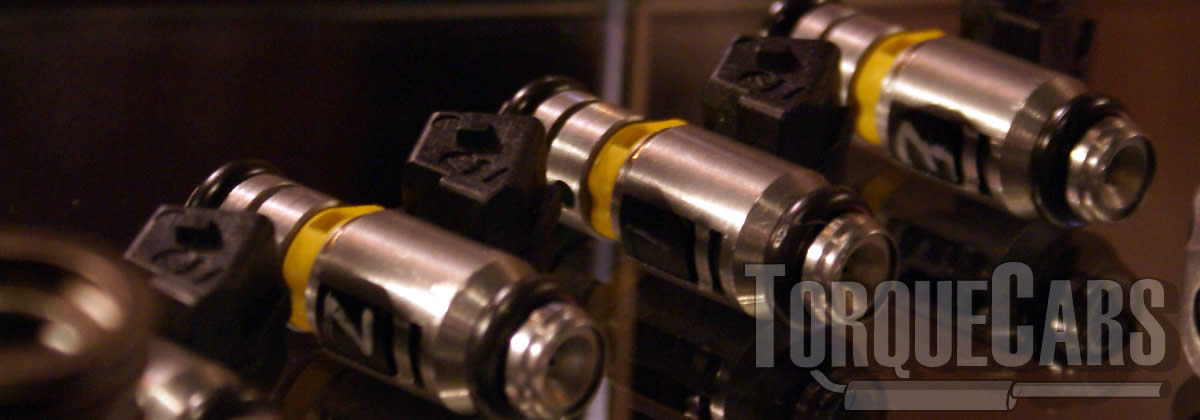Tuning the Audi EA111 Tuning (1.0 1.3 R3 TSi TFSi )
"Building the best modified Audi EA111 engine!"
Carref prides itself on providing the latest tips and guides to your modification project.
The Audi EA111 are fantastic to work on and with a few sensible upgrades like remapping, turbo kits and camshafts you will definitely increase your driving fun.
This pages aim is consider EA111 tuning and outline the best modifications.
We rely on our visitors to pass on tips and tell us about their projects and what worked on their car, and this article is the culmination of the feedback we have received. First let us look at the history and specs of this engine and then consider which tuning modifications work best on it.
History of the Engine
The EA111 arrived in 1974 and had a long production run, and some design elements still carry over into the latest EA211 engines and still exists today.

1.0 R3 12valve version
- CHYA 59 bhp
- CHYB 74 bhp
- CSEB 83 bhp
- DHSB 114 bhp
1.2 R3 6 valve version
- AWY, BMD 54 bhp) at 4,750 rpm(80 lbft) at 3,000 rpm
- BBM 59 bhp) at 5,000 rpm(80 lbft) at 3,000 rpm
1.2 R3 12 valve versions
- AZQ, BME 63 bhp) at 5,400 rpm(83 lbft) at 3,000 rpm
- BZG, CEV, CGPA 68 bhp) at 5,400 rpm(83 lbft) at 3,000 rpm
1.2 TSi TFSi
- CBZA 84 bhp
- CBZB 103 bhp
- CBZC 89 bhp
1.4 TFSi
1.6 TFSi
- 77kw / 5000rpm
- 155Nm / 3800rpm
Tuning the Audi EA111 and best EA111 performance parts.
What are the most effective EA111 parts
Just because particular tuning parts are are common on EA111 it doesn't mean it is good, we shall best tuning parts that will give your EA111 the best power gain for you money.
Altering your EA111 camshaft will make a dramatic difference to the engine torque. Choosing a higher performance camshaft profile raises the torque accordingly.

Fast road cams commonly increase the performance throughout the rev range, you could sacrifice a little bottom end torque but the high end rpm power will be lifted.
Motorsport cams, increase the high end rpm power band but as a result the car will not idle smoothly and low end power nearly always suffers.
A Motorsport and race camshaft is not great driving in heavy traffic.
You should ideally match your power band to your cars usage so for a daily driver stick with a mild fast road EA111 camshaft

Different EA111 engines respond better to extreme cam durations so view each engine as unique.
The engine timing and injectors and fuel pump also have an effect on the torque gains you'll hit.
Altering valve durations can alter the torque band and on most engines the exhaust and intake durations do not need to match, although most cams and tuners use matched pairs there are some advantages to extending the intake or exhaust durations.
Please watch our introduction Video tutorial to car tuning. Be sure to subscribe and support our new channel.
How to tune your car
- Improve the handling
Focus on Suspension improvements, such as coilovers and make sure the bushings are in good order and that the alignment is correct. Then focus on improving the brakes, with a big disk brake conversion kit and fast road brake pads.
- Remove restrictions
Focus on the intake and exhaust with filters being the common point of restriction in a tuned car. Intercoolers may also become restrictive on turbo engines so this may also need to be uprated.
- Burn more fuel & air
Increase the fuelling so it matches the air coming into the engine. The ratio is important so you need to improve the fuel pump and injectors, so the head mods, big valve conversions, fast road camshafts and forced induction upgrades extra supply of air is adequately met.
- Test and replace any weak parts
Weak areas are commonly the clutch, the turbocharger and pistons and crankshaft in a highly tuned engine. Makes sure these components will cope with your power aspirations.
- The Tune or Remap
A cars ECU controls the fuel, timing, spark and even the turbo in some cases, so to fully extract your gains you should remap the car last and this will fully release the power. Some cars are easy to map, and others require piggyback ECU's or aftermarket ECU's but this is the most vital step of your tuning project.
Modifying to Stage 1:
Remaps/piggy back ECU, Panel air filters, Intake headers, Fast road camshaft, Drilled & smoothed airbox, Sports exhaust manifold.
Modifying to Stage 2:
fuel pump upgrades, high flow fuel injectors, Ported and polished head, Fast road cam, induction kit, Sports catalyst & performance exhaust.
Modifying to Stage 3:
Crank and Piston upgrades to alter compression, Engine balancing & blueprinting, Competition cam, Internal engine upgrades (head flowing porting/bigger valves), Twin charging conversions, Adding or Upgrading forced induction (turbo/supercharger).
ECU flashing helps release the full potential of all the parts you've done to your EA111.
It will usually give around 30% more power on turbocharged vehicles and you can expect to see around 15% on NASP engines, but power output usually rely on the parts you've fitted and the condition of your engine.
Feeding air and fuel into each cylinder is the whole point to any engine modification task.
Intake manifold transmit the air from the intake filter and allow it to be sucked into the engine cylinders with fuel for the squish phase.
Shape and rate of flow of the Headers can make a substantial effect on to fuel atomisation on the EA111.
It's not uncommon that headers are improved through an upgrade, although some OEM provide fairly well optimized headers.
Fitting big valve kits, getting EA111 port enlargement and head flowing will also increase performance, & more importantly will give you an improved performance increase on other tuning mods.
Which turbo upgrades are best?

NASP engines need quite a lot of work when you add a turbo, so we have a separate guide to help you take into account the pros and cons of going this route on your EA111
The more air you can get into an engine, the more fuel it can burn and uprating the induction with a turbocharger upgrade makes excellent power gains.
If the engine is fitted with a turbo parts are relatively easy and you'll see that turbocharged engines use uprated components.
There are weak spots for every engine, with some being incredibly solid and some only just able to handle stock power
See where you'll find these limitations and install higher quality components to survive the power.
It's not unheard of people spending a loads of money on turbo charger upgrades on the EA111 only to experience the EA111 go up in smoke on it's first outing after it's been finished.
Large capacity turbos tend to suffer no power at low rpm, and low capacity turbos spool up more quickly but won't have the high rpm bhp gains.
Thanks to new tech the range of turbochargers is always moving on and we now see variable vane turbochargers, where the vane profile is altered according to speed to lower lag and increase top end torque.
Twin scroll turbochargers divert the exhaust flow into two channels and flow these at differently angled vanes in the turbo charger. They also help the scavenging effect of the engine.
You'll commonly see there's a limitation in the air flow sensor MAP/MAF/AFM on these engines when loads more air is being pulled into the engine.
We see 4 bar air sensors coping with quite large power gains, whereas the OEM air sensor sapped bhp and torque at a much lower level.
Adding a supercharger or additional turbo will make large power gains, although more complex to install. We have this feature on twinchargers if you want to read more.
Fuelling
You will need to ensure that the engine is not starved of fuel so will need to uprate the fuelling when you start extending past 20% of a torque increase. When it comes to your injectors flow rate you need some spare capacity, so don't calculate which injector and fuel pump setup will match your needs exactly or you'll have flat spots and fuelling issues and problems.
When it comes to your injectors flow rate you need some spare capacity, so don't calculate which injector and fuel pump setup will match your needs exactly or you'll have flat spots and fuelling issues and problems.
The accepted safe increase is to add 20% to the flow rate when buying an injector, this takes into account injector deterioration and allows you some spare capacity should the engine require more fuel.
We think this one is common sense, but you'll need to match your fuel injector to the type of fuel your car uses as well.
All the following flywheel power targets will assume an injector duty cycle of 80% and a base of 58psi of fuel pressure at idle.
4 Cylinder turbocharged engines
- 58 PSI 340cc/min 200hp
- 58 PSI 511cc/min 300hp
4 Cylinder NASP engines
- 58 PSI 285cc/min 200hp
- 58 PSI 426cc/min 300hp
4 Cylinder supercharged engines
- 58 PSI 312cc/min 200hp
- 58 PSI 468cc/min 300hp
Choosing the right performance exhaust
One of the most common mistakes and problems we see in tuning projects is usually down to the exhaust, or rather a poorly chosen exhaust for your engine.
You should look to upgrade your exhaust if the existing exhaust is creating a restriction.
On most factory exhausts you'll see your flow rate is still fine even on modest power gains, but when you start pushing up the power levels you will need to get a better flowing exhaust.
Sports exhausts generally help improve air flow from the engine but do not go too big or you may end up will reduce the flow rate. Stick to 1.5 to 2.5 inches for best results.
Usual exhaust restrictions are in the catalyst and filters installed, so adding a better flowing performance alternative will help avoid this restriction.
Weak spots Issues & problem areas on the EA111
The EA111 engines are generally reliable and solid as long as they are regularly serviced and maintained.
Regular oil changes are vital on the EA111, especially when tuned and will help extend the life and reliability of the engine.
For more information on Tuning your EA111 engine please join us in our friendly forum where you can discuss tuning options in more detail with our tuning articles to get a full grasp of the benefits and drawbacks of each modification.
Please help us improve these tips by sending us your feedback in the comments box below.
We love to hear what our visitors have got up to and which tuning mods work best for them on each model of car. Comments are used to improve the accuracy of these EA111 articles which are continually updated.
If you liked this page please share it with your friends, drop a link to it in your favourite forum or use the bookmarking options to save it to your social media profile.
Check out TorqueCars new YouTube channel, and see their awesome new content...
Feedback
Please use our forums if you wish to ask a tuning question, and please note we do not sell parts or services, we are just an online magazine.
Help us improve, leave a suggestion or tip
